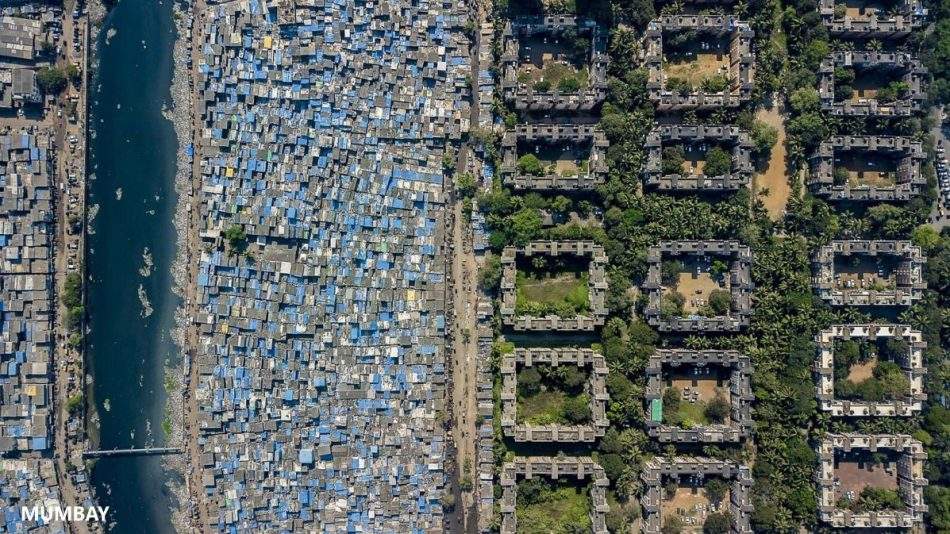Where are green spaces going?
While money does not grow from trees, the tendency of trees is to approach to financial prosperity. This connection between tree growth and capital accumulation has provoked global reflections on the socio-economic disparities materialized geographically in cities and their effects on urban life.
Urban areas often show an asymmetrical distribution of green spaces, whose use and enjoyment varies among inhabitants. Aerial images of different urban environments reveal that shades of green tend to be more prominent and concentrated in areas of high economic valuation. This complex interplay between vegetation and wealth highlights the importance of understanding how socioeconomic disparities manifest themselves in the geographic environment and how they impact the quality of urban life.
Parks, gardens, squares, tree-lined avenues and community spaces are essential elements in the urban environment, especially in the current context of environmental and climate crisis. Beyond their aesthetic function, these spaces exert a significant influence on urban dynamics and demographics. They serve as places for recreation, sports and cultural activities, while contributing to mitigate air pollution and regulate the urban climate, thus benefiting the quality of life of urban residents. Research shows that interaction with green areas favors the physical and mental development of children, and in the case of older adults, promotes better physical health, social integration and general well-being.




The World Health Organization states that every individual should have access to at least 2 hectares of green space within 300 meters of their home (equivalent to a 5-minute walk), regardless of their geographic location. However, these recommendations are often overlooked, and when implemented, the distribution of green space is often uneven across locations and socioeconomic groups. Low-income areas often lack vegetation and recreational opportunities, while more affluent districts enjoy greater access to well-maintained, high-quality green space.
Urban inequity is not only limited to disparity in income distribution, but is also reflected in unequal access to services such as health care, education, public transportation, and public and green areas. These infrastructures are often disproportionately allocated, concentrated in areas that are economically valued and inhabited by individuals with greater purchasing power. This dynamic restricts the access of groups with different socioeconomic, ethnic or geographic levels, limiting various aspects of their daily lives and restricting their full right to enjoy urban life.




Research by the European Environment Agency shows that across Europe, green spaces are less accessible in low-income neighborhoods compared to other areas. In cities in countries such as Germany, the Netherlands and Portugal, areas with lower incomes, lower education levels and high unemployment rates tend to have access to smaller green spaces compared to more affluent neighborhoods. In addition, communities with high proportions of immigrants and ethnic minorities also face limited access to quality green areas.
In the United States, research reveals that income, education, and race directly influence access to green spaces, according to surveys conducted in metropolitan areas of cities such as New York, Los Angeles, and Chicago. These studies analyze vegetation using satellite imagery and compare its distribution with the aforementioned indicators. The results show that access to green areas reflects deeper divisions of class and race in the territories, which are considered to be more influential factors. Neighborhoods with a higher concentration of residents with higher education also have more green areas available. On the other hand, areas inhabited by Latino and African American populations have more limited access to greenery.
Green spaces play an essential role in improving the quality of urban life. They are fundamental elements for urban ecology and the well-being of the population. The lack of these spaces in vulnerable areas highlights the unequal distribution and perpetuates the cycle of inequality in cities. Urban planning should promote a more equitable distribution of green spaces, ensuring that even low-income neighborhoods have access to them. Addressing this relationship in a fair and equitable manner enriches the quality of life and contributes to building more sustainable cities, where green is an increasingly present and inclusive nuance.
Learn more about this service
Click here and find out more about our services.
Te enviaremos el artículo directamente a tu E-mail de manera instantánea.
Enviando datos, espere un momento
¡Datos enviados correctamente!
Tu mensaje será atendido en un momento
¿Desea enviar otro mensaje?
Comments
We are interested in your opinion, please leave us a comment